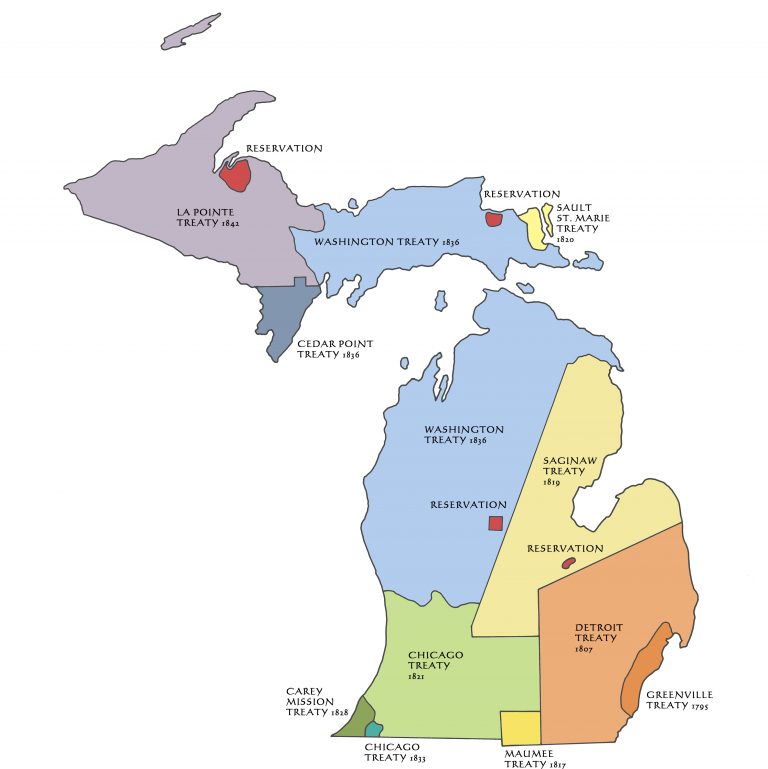In the 1800s, tribal nations and the United Stated entered into many treaties. A treaty is an agreement between two independent nations and is upheld by the U.S. Constitution. A nation is a group a people living under their own independent government. The United States and a tribe are two independent or sovereign nations, just like the United States and Canada are two independent nations. A tribal government runs independently from the United States government.
Treaties between the United States and Tribal Nations
The United States entered into nearly 400 treaties with over one hundred tribal nations from 1778-1871. While each treaty was unique, most involved tribal nations giving the United States land. In exchange, the United States government promised money, farming equipment, supplies, schools and farming experts to the tribal nations. The United States often did not keep these promises.
By the end of the 1800s, the United States owned nearly all of the land that once belonged to tribal nations. Small bits of land were set aside for tribes to live on, but they had to stay on that land. These sections of lands are called reservations. If people from the tribe left the reservations, the United States government threatened to remove them from the land and send them to the west. The land was, and still is, deeply important to the tribes.
Treaties with Michigan’s Tribal Nations
Between 1795 and 1855, Michigan’s Tribal Nations signed many treaties with the United States Government and the State of Michigan. In each of these treaties, tribes kept the right to hunt on the land and fish in the lakes, even if the tribes gave up the land. The United States government then sold the land to settlers, people who move to a new area. The United States government also sold the land to lumber and mining companies. All the towns, cities, and roads in Michigan were built on lands obtained from treaties with Michigan’s tribal nations.




